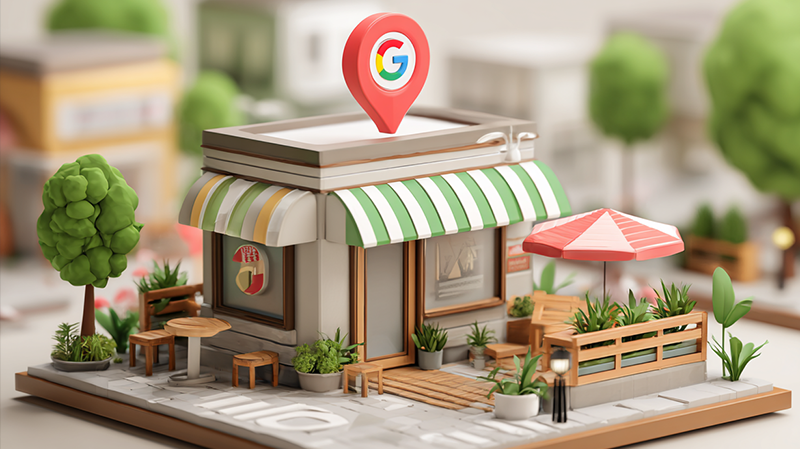By Katrin Krakovich, CEO & SEO Expert at Lahav Media
Last week, I walked into a fantastic little bistro in downtown Portland. The food was incredible, the atmosphere was perfect, and the owner clearly cared about every detail. But when I searched for "best restaurants near me" later that evening, they didn't show up anywhere in the top 20 results.
Their Google Business Profile looked like it was set up by someone's nephew in 2019 and forgotten about ever since. Three photos, outdated hours, and zero reviews from the past six months. Meanwhile, their mediocre competitor across the street was ranking #2 with consistent five-star reviews and mouth-watering photos.
This is exactly why Google Business Profile optimization for restaurants isn't optional anymore, it's the difference between thriving and barely surviving in today's local search landscape.
The Brutal Truth About Local Restaurant Discovery
Here's what every café, restaurant, coffee shop, and bar owner needs to understand: 76% of people who search for something nearby on their smartphone visit a related business within 24 hours. And 28% of those searches result in a purchase.
But here's the kicker - if you're not in those top three Google Maps results, you might as well be invisible.
I've seen too many incredible restaurants struggle with unpredictable foot traffic while their competitors with mediocre food but optimized Google Business Profiles get consistent customers. It's not fair, but it's reality.
What Makes a Restaurant's Google Business Profile Actually Work
Complete Your Profile Like Your Revenue Depends On It (Because It Does)
Your Google Business Profile is your digital storefront. Would you leave your physical restaurant half-painted with a broken sign? Then why would you leave your profile 60% complete?
Essential elements that most restaurants mess up:
Business Information Accuracy: Your name, address, and phone number must be identical everywhere online. One typo can confuse Google's algorithm and tank your local rankings.
Categories Matter More Than You Think: Don't just pick "Restaurant." If you're a coffee shop that serves brunch, select "Coffee Shop" as primary and "Brunch Restaurant" as secondary. Bars should include "Cocktail Bar" or "Sports Bar" - be specific about what you actually are.
Hours That Actually Reflect Reality: Nothing kills trust faster than showing up to a closed restaurant that Google said was open. Update your hours for holidays, special events, and seasonal changes immediately.
Photos That Make People Hungry (Not Confused)
I've audited hundreds of restaurant profiles, and the photo section is where most owners completely drop the ball. You need photos that tell a story and make people want to visit right now.
The photo strategy that actually drives traffic:
Upload photos monthly, not yearly. Google's algorithm favors fresh content, and recent photos signal that your business is active and current.
Interior shots should showcase ambiance: Show your dining room during peak hours with happy customers (with permission), not empty tables that make people wonder if you're even open.
Food photography needs to be Instagram-worthy: Blurry photos of your signature dish won't cut it. Invest in decent food photography or learn to take better phone photos with proper lighting.
Behind-the-scenes content builds trust: Photos of your kitchen, your team preparing food, or your coffee roasting process help customers feel connected to your brand.
Reviews: The Make-or-Break Factor for Local Search
Google's algorithm uses review signals heavily in local rankings. But it's not just about quantity - it's about consistency, recency, and how you respond.
The review management system that works:
Ask every satisfied customer for a review, but make it easy. Don't just say "leave us a review" - show them exactly how on their phone before they leave.
Respond to every single review, positive and negative. Your responses show up in search results and demonstrate that you care about customer experience.
For negative reviews, respond publicly with empathy and offer to resolve the issue offline. Future customers are watching how you handle criticism.

Advanced Optimization Tactics Most Restaurants Miss
Google Posts: Your Secret Weapon for Staying Visible
Google Posts appear directly in your Business Profile and can showcase daily specials, events, or new menu items. Most restaurants ignore this feature, which is a massive missed opportunity.
Post weekly about menu updates, happy hour specials, or upcoming events. These posts can include call-to-action buttons that drive direct actions like phone calls or website visits.
Attributes and Services: Help Google Understand Your Business
Use every relevant attribute available. If you offer takeout, delivery, outdoor seating, or WiFi - make sure it's listed. These details help you appear in specific searches like "restaurants with patio seating" or "coffee shops with WiFi."
For bars and coffee shops especially, attributes like "live music," "good for groups," or "cozy atmosphere" can help you capture searches from people looking for specific experiences.
Q&A Section: Control the Narrative
Don't wait for customers to ask questions - anticipate them. Add questions and answers about your most popular dishes, parking availability, reservation policies, and dietary accommodations.
This proactive approach ensures accurate information appears in your profile and helps you control what potential customers see.

The AI Search Revolution: Why Your Business Profile Needs to Work Harder
ChatGPT, Google Gemini, AI Overview and other AI search tools are changing how people discover restaurants. When someone asks "What's the best Italian restaurant near downtown?" these AI tools pull information directly from business profiles to generate answers.
If your Google Business Profile isn't comprehensive and up-to-date, you won't show up in these AI-generated recommendations. This means you're missing out on an entirely new way customers discover local businesses.
Make your profile AI-friendly by:
Using natural language in your business description that answers common questions customers might ask AI assistants.
Keeping your menu, hours, and contact information current so AI tools have accurate data to work with.
Encouraging reviews that mention specific dishes, atmosphere details, and experiences that AI can reference when making recommendations.
Measuring Success: KPIs That Actually Matter
Track these metrics monthly to see if your optimization efforts are working:
Search Impressions: How often your business appears in Google searches
Profile Views: How many people actually click to see your full profile
Direction Requests: The number of people who ask for directions to your location
Phone Calls: Direct calls generated from your profile
Website Clicks: Traffic driven to your restaurant's website
Most restaurant owners never look at these numbers, then wonder why their marketing isn't working.

Common Mistakes That Kill Your Local Rankings
Inconsistent NAP (Name, Address, Phone): If your information varies across Google, your website, and other directories, Google gets confused and your rankings suffer.
Ignoring duplicate listings: Sometimes Google creates multiple listings for the same business. Claim and merge these immediately or they'll compete against each other.
Buying fake reviews: Google's algorithm is sophisticated enough to detect review patterns. Fake reviews will eventually get filtered out and can result in penalties.
Setting and forgetting: Your profile needs ongoing attention. Businesses that regularly update their profiles consistently outrank those that don't.
The Bottom Line for Restaurant Owners
Your Google Business Profile optimization directly impacts how many people discover your restaurant, café, coffee shop, or bar when they're ready to eat or drink. In a world where 97% of consumers search for local businesses online, an unoptimized profile is basically turning away customers.
The restaurants that take this seriously - updating photos regularly, managing reviews proactively, and keeping information current - consistently see more foot traffic, better online visibility, and higher revenue.
The ones that don't? They keep wondering why their amazing food isn't translating into consistent customers.

-p-500.jpg)
